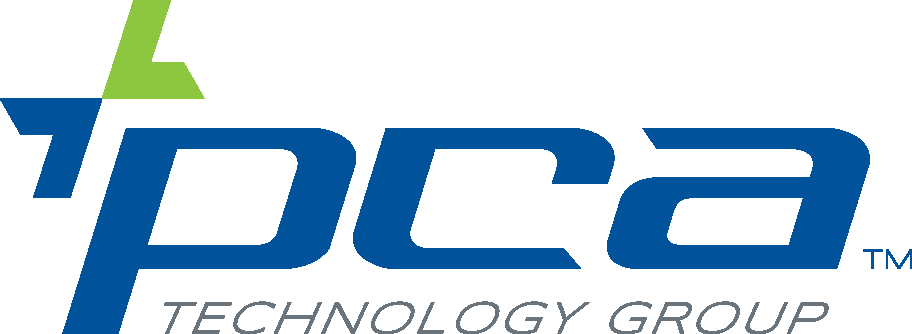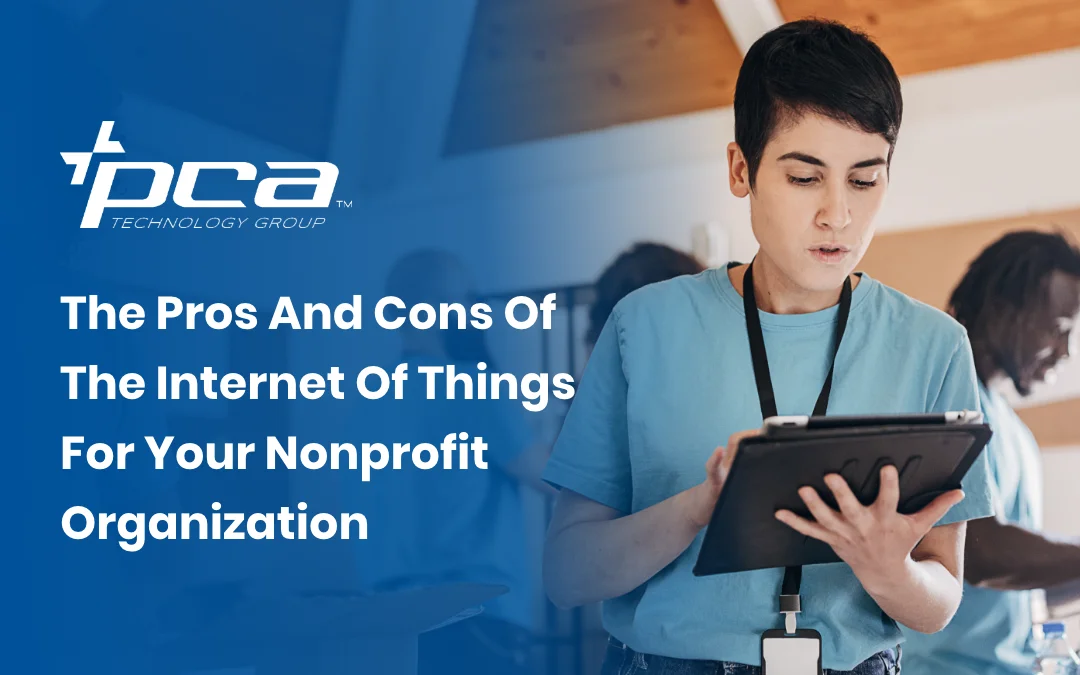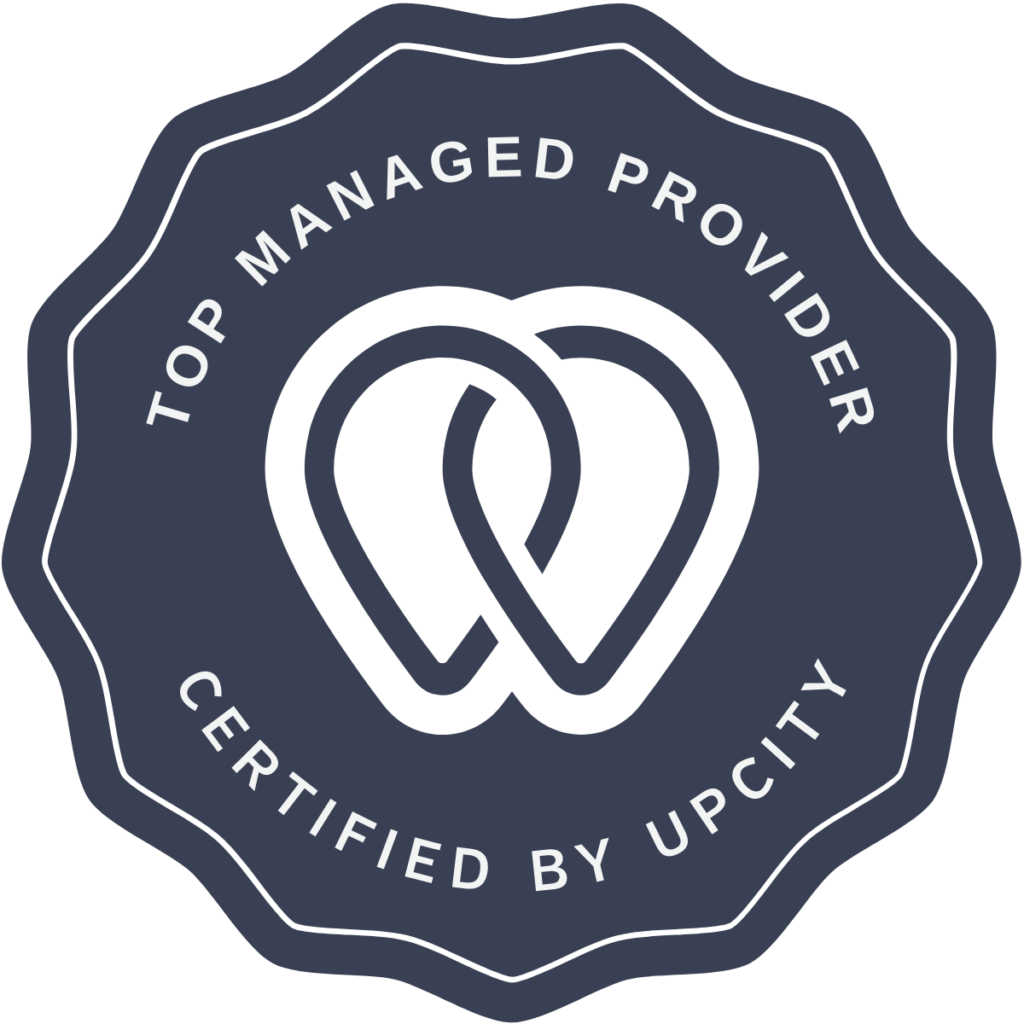Advancements in technology can benefit nonprofit organizations (NPOs) as much as they do for-profit ones. However, as many enterprises have learned, such advancements come with both positives and negatives, especially when it comes to the Internet of Things (IoT). By understanding the pros and cons of IoT, you can determine whether it is right for your NPO, and if it is, how to take advantage of the benefits while minimizing the flaws.
What is Internet of Things?
The Internet of Things refers to a dynamic network of devices embedded with sensors, software, and technologies. These features allow IoT devices to share information with other devices connected to the internet, such as mobile devices and computers. For example, an IoT thermostat can send temperature updates in real time to your phone, even if you are out of the house. From your phone, you can then adjust the thermostat to suit your preferences.
IoT technology can be utilized in both the home and the workplace, enabling greater efficiency, flexibility, and responsiveness. But its applications are not limited to amenities. IoT can also improve, strengthen, and streamline the way organizations go about fulfilling their primary objectives. This includes nonprofit organizations.
Pros and cons of IoT
Much like any other complex technology, IoT comes with benefits and drawbacks that need to be weighed against each other.
Pros of IoT
The myriad advantages of IoT include the following: cost efficiency, enhanced operational efficiency, automation, security monitoring and control, data collection, and convenient donations.
Cost efficiency
IoT devices enable NPOs to optimize workflows and reduce operational costs through proactive maintenance scheduling and real-time monitoring. By leveraging IoT technology, nonprofits can identify inefficiencies and streamline processes, ultimately saving NPOs both time and money they can then direct to fulfilling their missions. To build on the above thermostat example, IoT temperature control solutions can include sensors that automatically react to internal temperature readings, then adjust the internal heating accordingly without human input or management. Because the temperature systems adjust themselves as necessary, NPOs can save on heating and electricity bills without sacrificing comfort.
Enhanced organizational efficiency
Thanks to the same proactive monitoring that saves NPOs time and money, IoT devices also minimize downtime and maximize productivity. Integrated IoT systems collect data from which NPOs can obtain valuable insights into operational performance. These insights help organizations improve decision-making processes and optimize resource allocation, ultimately boosting output and efficiency.
Automation
IoT can automate repetitive tasks, freeing up valuable human resources for more productive and strategic initiatives. For example, IoT-equipped office assets (laptops, tablets, headphones, and more) that can be easily assigned and tracked make for an easily managed inventory. Sensors within supply storage can notify you if office resources such as paper or ink are running low. In addition, by entrusting such tedious work to IoT, NPOs prevent instances of human error, further promoting efficiency and ensuring quality of service.
Security monitoring and control
IoT-enabled security systems allow organizations to monitor and secure their premises in real time. Security and other authorized personnel can receive security alerts and monitoring feeds directly on their smartphones and tablets, greatly increasing efficiency and reactivity.
Data collection
IoT data collection can be tailored to meet the specific needs of an organization and its focus. For example, medical NPOs can implement IoT-enabled monitoring devices to track patient health in real time, improving medical staff’s ability to respond and administer the necessary treatment. Environmental NPOs can use IoT audio-detection devices placed in restricted forestry areas to alert them to the sounds of logging machinery.
Convenient donations
IoT can boost NPOs’ ability to raise funds. By deploying contactless payment points (either stationary or mobile), NPOs make it easy and convenient to donate with a simple tap of the card.
Cons of IoT
IoT also has several drawbacks that may make them unsuitable for NPOs:
Compatibility challenges
One of the primary drawbacks of IoT adoption is the lack of standardization, leading to compatibility issues between devices from different manufacturers. This lack of interoperability can hinder seamless integration and increase deployment costs, requiring NPOs to invest in custom solutions or proprietary technologies.
Dependency on infrastructure
IoT devices rely heavily on stable internet connections and power sources to function effectively. In the event of network outages or power failures, IoT systems may experience disruptions, impacting organizational operations and service delivery. NPOs must consider backup solutions and contingency plans to mitigate the risks associated with infrastructure dependencies.
Security risks
Despite efforts by manufacturers, IoT devices are a target for cyberthreats, including data breaches and unauthorized access. The proliferation of connected devices creates increased risks of cyberattacks targeting NPOs’ sensitive data and assets. Implementing robust security measures, such as encryption protocols and access controls, as well as rigorous software patching, is necessary to safeguard IoT systems against potential threats.
Implementation costs
The initial costs associated with IoT deployment, including hardware purchases, installation, and integration, can be significant for NPOs with limited budgets. Furthermore, ongoing maintenance and support expenses may further strain financial resources, necessitating careful evaluation of the return on investment and long-term sustainability of IoT implementation.
Complexity of management
Managing IoT systems involves dealing with complex networks of interconnected devices and software platforms. NPOs may encounter challenges related to device configuration, data management, and troubleshooting, requiring specialized expertise and resources to ensure smooth operation and optimal performance.
Consult with a PCA Technology Group expert about integrating IoT and other innovations into your organization’s system. Contact us today.


